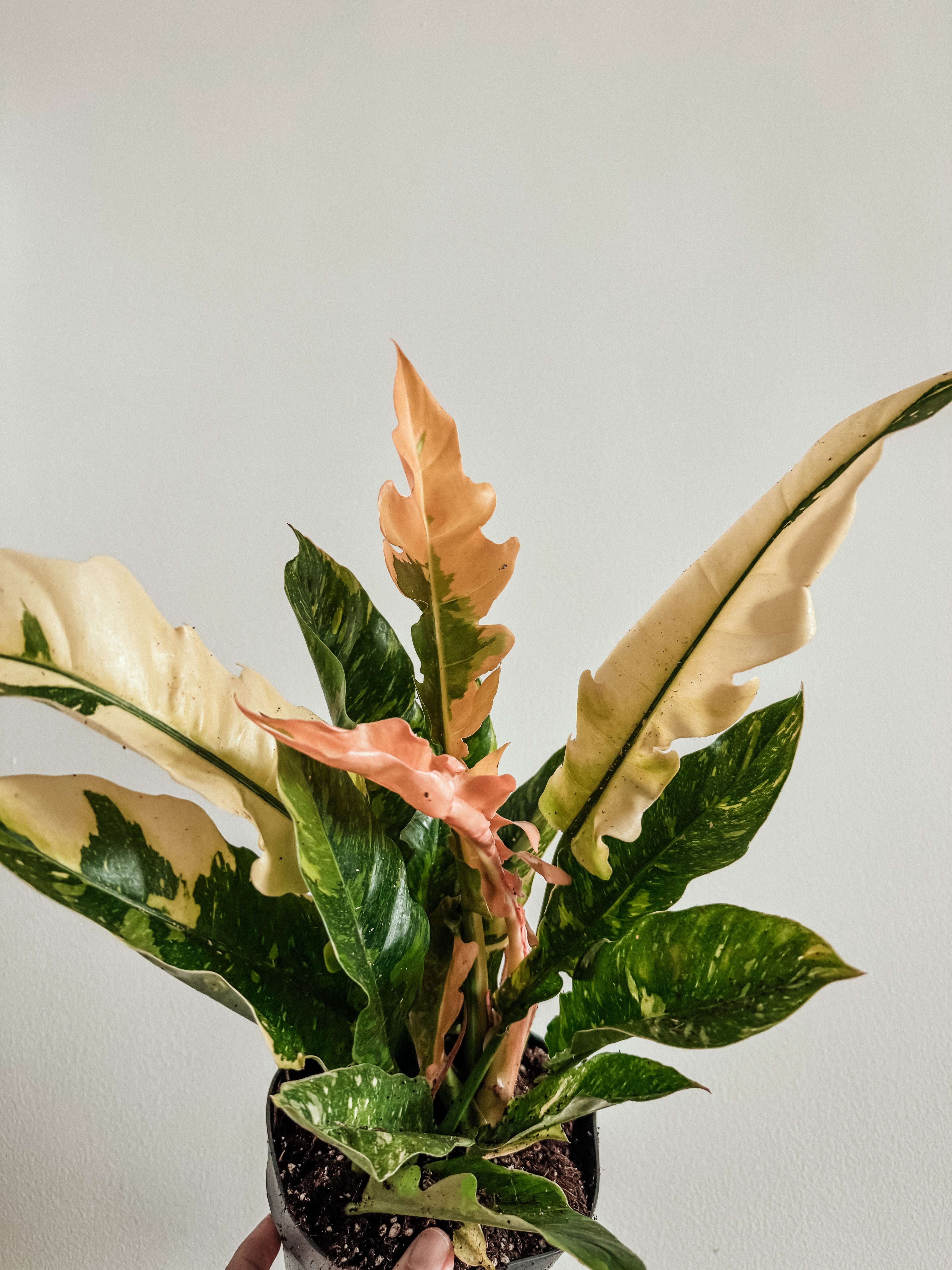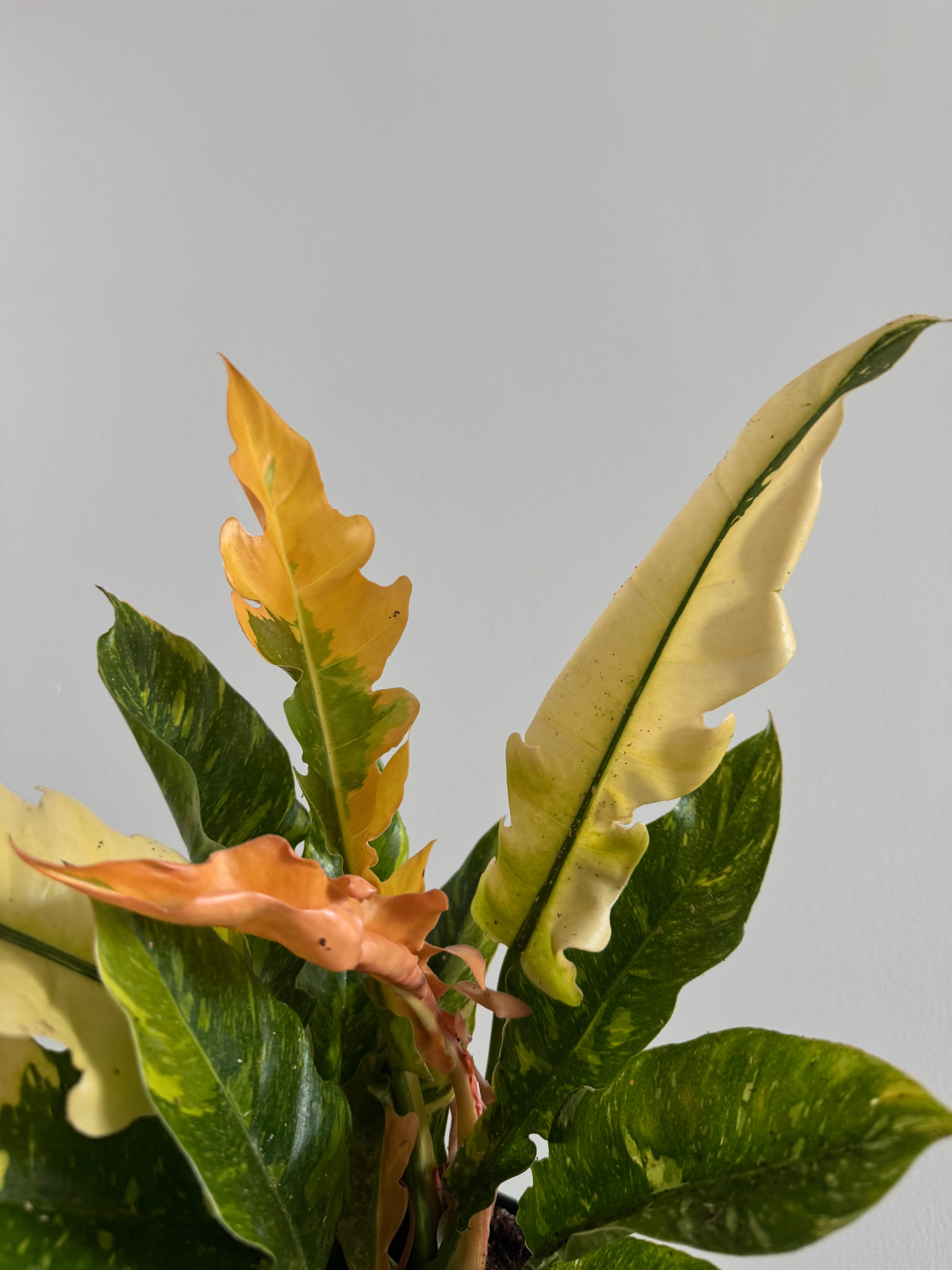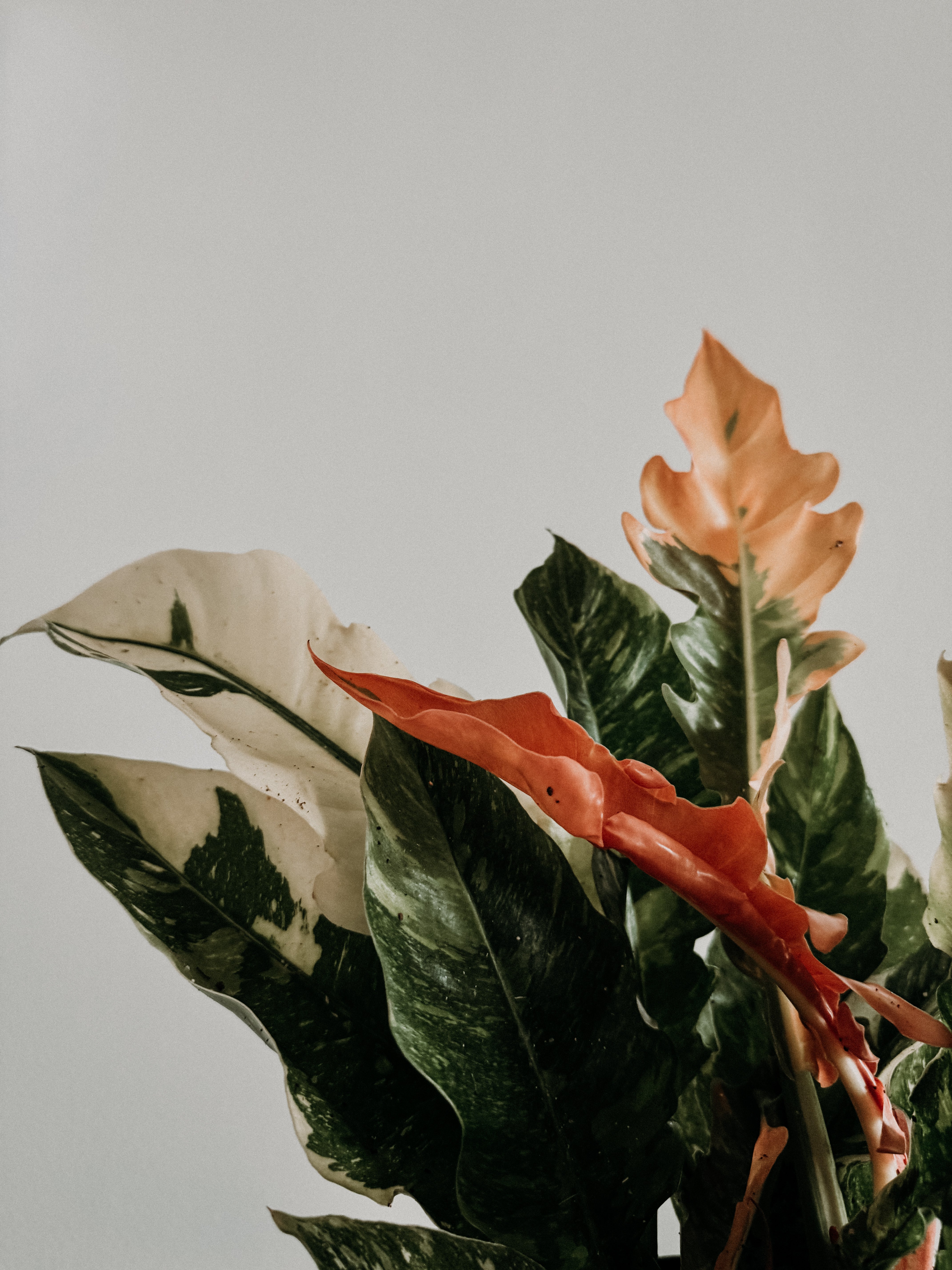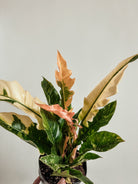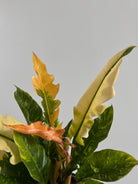Philodendron Ring of Fire
Couldn't load pickup availability
🌿 Philodendron ‘Ring of Fire’ Care Guide
✨ Overview
Philodendron ‘Ring of Fire’ is a rare hybrid believed to be a cross between Philodendron wendlandii and Philodendron tortum.
It’s loved for its toothed, deeply serrated leaves with bright variegation — shades of green, cream, orange, red, and even pink.
This plant grows slowly but rewards patience with spectacular foliage when given warmth, light, and humidity.
☀️ Light
-
Bright, indirect light is ideal.
-
It can tolerate some gentle morning or late afternoon sun but avoid harsh midday rays.
-
Too little light = dull variegation and slow growth.
-
Too much light = scorched or bleached leaves.
💡 Tip: Place it near an east-facing window or several feet from a bright south or west window with filtered light.
🌡️ Temperature
-
Thrives in 20–30°C (68–86°F)
-
Keep away from air conditioners - consistent warmth is key for growth.
💧 Watering
-
Water when the top 2–4 cm (1–1.5 in) of soil are dry.
-
Soak the soil thoroughly, then let excess water drain out.
-
Never leave the plant sitting in water — it’s sensitive to root rot.
-
In winter or low light, water less frequently.
💧 Rule of thumb: Keep the soil slightly moist, not soggy — “moist but airy.”
🌫️ Humidity
-
Loves high humidity (60–80%).
-
If the air is dry, use a humidifier or pebble tray.
-
You can also group it with other tropical plants to create a humid microclimate.
-
Brown leaf tips usually mean the humidity is too low.
🌱 Soil
Use a well-draining, chunky aroid mix to mimic rainforest conditions.
Recommended blend:
-
40% coco coir or peat moss
-
30% orchid bark
-
20% perlite or pumice
-
10% charcoal or sphagnum moss
This ensures airflow to the roots while retaining just enough moisture.
🌾 Fertilizer
-
Feed every 3–4 weeks during the growing season (spring and summer).
-
Use a balanced, water-soluble fertilizer diluted to half strength.
-
Stop or reduce feeding during fall and winter when growth slows.
💡 A slow-release fertilizer in early spring can also help maintain steady nutrition.
🪴 Repotting
-
Repot every 1–2 years, or when roots start circling the pot.
-
Choose a pot that’s only slightly larger than the current one, with excellent drainage.
-
Best time: spring or early summer, when the plant is actively growing.
🌘 Growth Habit & Support
-
A slow-growing climbing philodendron.
-
Provide a moss pole or totem for it to climb — this encourages larger, more colorful leaves.
-
If left unsupported, it may grow more horizontally and smaller-leaved.

